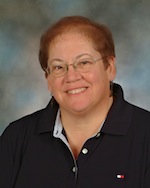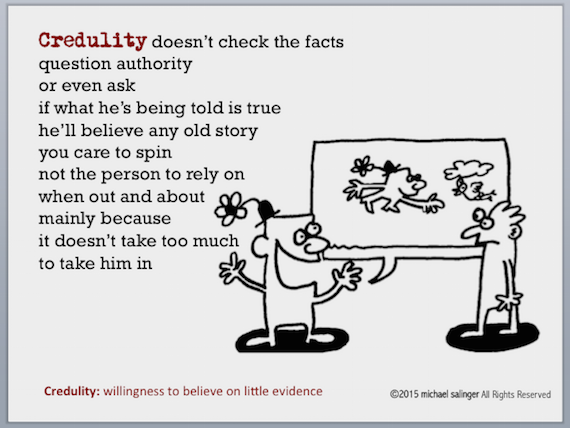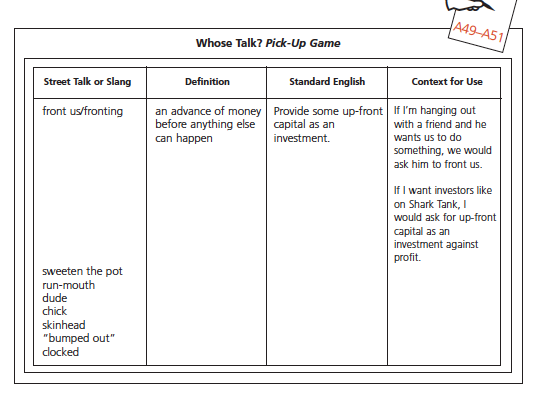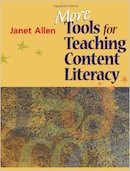Teaching Vocabulary in Word-Rich Classrooms
by Janet Allen
 What Is Word-Rich Instruction?
What Is Word-Rich Instruction?
“Rich instruction is very open-ended; it is not some particular set of activities but rather any activity that gets students to use, think about, and become involved with words. The major concept is to provoke thought.” – M. D. McKeown and I. L. Beck (2004)
As McKeown and Beck note, rich instruction is open ended. While each teacher might develop very different strategies for enriching all components of a comprehensive vocabulary program, the common denominator will be that students will experience an enriched environment where they are immersed in interesting language.
They will learn in classrooms filled with texts that use language in ways that make students want to read one book after another. They will learn from teachers who enjoy language, and they will want to emulate that language.
How Could Word-Rich Instruction Work in the Classroom?
Unlike the other specific activities and strategies highlighted in Tools for Teaching Academic Vocabulary (Stenhouse 2014), there is no formula for what word-rich instruction might look like in your classroom. Some examples of activities that help create word-rich environments follow.
► Begin class some days with word or critical thinking puzzles. While you won’t find this type of activity in state standards documents, it is amazing to see how those three or four minutes can take students from lethargic to energetic.
Puzzles can be found in lateral-thinking books, on the Internet, and from companies such as mindware.com. They will highlight interesting ways to help students become intrigued with words and learn mnemonic devices for remembering words.
For example, you might ask your students what the following words have in common: banana, dresser, grammar, potato, revive, uneven, voodoo, assess.* Or, ask them to interpret these mnemonic devices: “Please Excuse My Dear Aunt Sally” (order of operations in math); “Kids Prefer Cheese Over Fried Green Spinach” (order of taxonomy in biology); or, “Now I Need a Verse Recalling Pi” (a way to remember the first six digits of Pi).
► Begin some days with “definition poetry” such as the poems you would find in Michael Salinger’s Well-Defined: Vocabulary in Rhyme (2009), and ask students to write their own definition poems for general academic or domain-specific vocabulary words.
► Show clips of speeches, talk shows, or news reports, and give students the opportunity to identify propaganda techniques as elements of persuasion: simplification, fallacy, ambiguous words, emotional appeal, hot/cold words, innuendo, exaggeration, bandwagon, and double talk.
► Develop lessons focused on language register. In the activity “Whose Talk? Understanding Language Register” (download page A49 of the appendix), students are challenged to identify street talk or slang, define the words or phrases, translate the words into Standard English, and identify contexts for both types of language.
The example in the figure above is based on language used in Aronson and Smith’s anthology about street basketball, Pick-Up Game (2011). Use informal language from any text as an introductory activity to segue into changing language register for audience and purpose in writing and speaking.
► Create language activities for student collaboration and friendly competition. Students are always more engaged with language activities that offer time to talk and create challenges for other students. Teaching collective nouns with an activity such as “A Pod of Dolphins?” is one example of an interesting way to study grammar and usage. A sample version is on page A50 of the appendix, and a blank version appears on page A51 (download Appendix 50 & 51). This activity can be extended to a lesson on single and plural nouns and subject-verb agreement.
When and Why Should I Use Word-Rich Instruction?
Word-rich instruction is a significant part of fostering word consciousness. It can be a natural part of all that you do, and it can also be planned as support for your instruction. As students become more interested in language, you will find that you won’t have to plan as many activities as they will be providing much of the enriched language use in the classroom.
McKeown and Beck continue their support of rich instruction with these words: “Give students a variety of information—examples, contexts, pictures, relationships. Then have them engage in interactions— create contexts, compare features of words, explain their reasoning, and discuss meanings and uses” (2004, 21). Fostering word consciousness in these ways forms the foundation for learning all types of academic language.
*Did you figure it out? Move the first letter of each word to the end of the word and you have the same word when read in reverse (e.g., banana / ananab).
References
• Aronson, M., and C. R. Smith. 2011. Pick-Up Game: A Full Day of Full Court. Somerville, MA: Candlewick.
• McKeown, M. D., and I. L. Beck. 2004. “Direct and Rich Vocabulary Instruction.” In Vocabulary Instruction: Research to Practice, ed. J. F. Baumann, and E. J. Kame’enui. New York: Guilford.
• Salinger, M. 2009. Well-Defined Vocabulary in Rhyme. Honesdale, PA: Boyds Mills.
Janet Allen is an international consultant recognized for her comprehensive work in reading education. After teaching reading and English for nearly 20 years in Maine, she relocated to the University of Central Florida where she taught reading, writing and English education courses and directed the Central Florida Writing Project. She is now a full-time researcher, writer, and consultant in schools and districts involved in rethinking their approaches to literacy and learning. She is the author of numerous books on literacy topics.




































